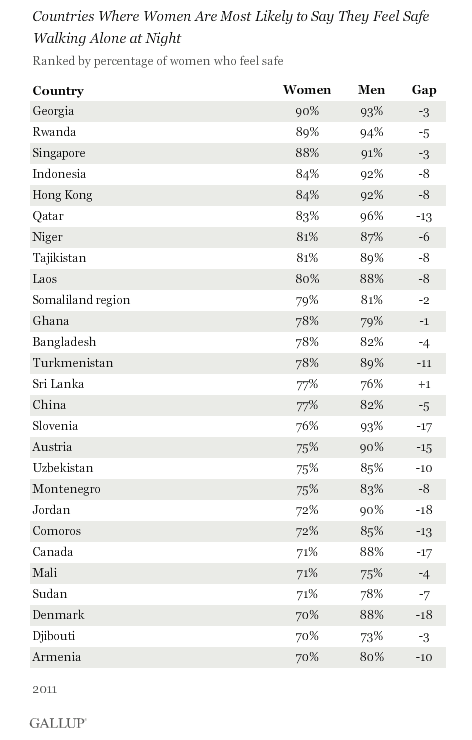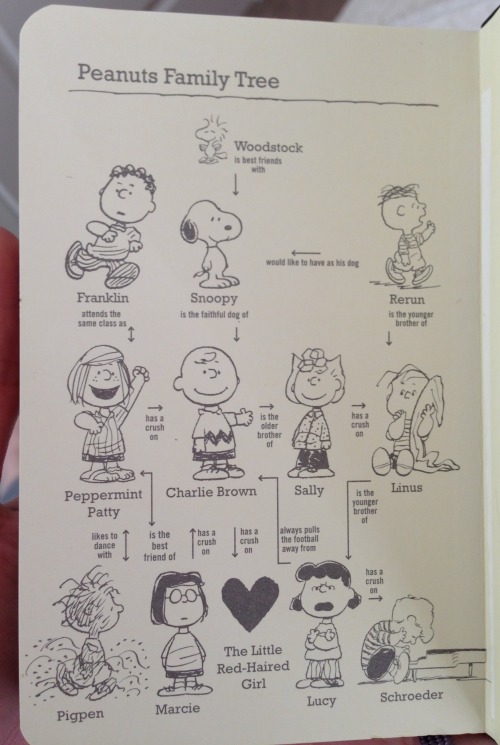
Totally inaccurate portion sizes.
Mahayana6 half-pints = one pint
QUÊ?!

You may know the Team Gulp by its original name: “Lake Huron.”
More ridiculous soft drink charts here.
MahayanaBonito que parece que o pessoal causa fraude pq gosta e ninguém tenta replicar resultado pq é chato fazer isso. Eu sairia replicando resultado a torto e a direita se isso garantisse publicação.
Óbvio que quem frauda é culpado, mas é bom lembrar que o aumento das fraudes vem da pressão constante por resultados, e resultados inéditos. Ninguém quer publicar relato de experimento que não dá resultado relevante ou experimento que replica um outro e fala "é, tem esse efeito aí mesmo, galera".
In the Washington Post, Peter Whoriskey writes about the rising incidence of fraud in research labs:
It may be impossible for anyone from outside to know the extent of the problems in the Nature paper. But the incident comes amid a phenomenon that some call a “retraction epidemic.”
Last year, research published in the Proceedings of the National Academy of Sciences found that the percentage of scientific articles retracted because of fraud had increased tenfold since 1975.
The same analysis reviewed more than 2,000 retracted biomedical papers and found that 67 percent of the retractions were attributable to misconduct, mainly fraud or suspected fraud.
One of the less-obvious downsides of academic fraud:
The trouble is that a delayed response — or none at all — leaves other scientists to build upon shaky work. [Ferric] Fang said he has talked to researchers who have lost months by relying on results that proved impossible to reproduce.
Moreover, as [Adam] Marcus and [Ivan] Oransky have noted, much of the research is funded by taxpayers. Yet when retractions are done, they are done quietly and “live in obscurity,” meaning taxpayers are unlikely to find out that their money may have been wasted.
Mahayanaquibe <3

 Preparando o tempero do quibe:
Coloque no processador ou pique bem miudinho: 1 cebola, 2 dentes de alho, 1/2 xícara de folhas de hortelã, 1/2 xícara de salsinha, 2 tomates sem pele e sem semente.
Preparando o tempero do quibe:
Coloque no processador ou pique bem miudinho: 1 cebola, 2 dentes de alho, 1/2 xícara de folhas de hortelã, 1/2 xícara de salsinha, 2 tomates sem pele e sem semente.


The Countries Where Women Have the Best Lives, in Charts
via walex
It’s a shame the visual presentation in this article is so shoddy.

Caralho!!!! A Marvel liberou SETECENTAS EDIÇÕES DE GRÁTIS para baixar no ComiXology, aplicativo de quadrinhos digitais!!!
Isso mesmo! Se lembra daquela porrolhada de teasers falando de número 1, que a Marvel fez primeiro, etc, etc? pois bem, isso tudo foi para falar que a editora, até terça, dia 12, está dando praticamente todas as suas edições número 1 de grátis no ComiXology.
All New X-Men, Avengers, Avengers Arena, Captain America, Cable And X-Force, Deadpool, Fantastic Four, FF, Indestructible Hulk, Iron Man, Point One, Morbius, New Avengers, Savage Wolverine, Superior Spider-Man, Thor God Of Thunder, Thunderbolts, Uncanny Avengers, Uncanny X-Force, X-Men Legacy, Young Avengers e praticamente TUDO que já foi publicado! Antigos e novos!

A procura está sendo tão absurda que o site do Comixology caiu. Agora mesmo (domingo, às 18h, enquanto vejo o Vasco tomar um gol do Botafogo na final da Taça Guanabara) está impossível de baixar qualquer gibi, tamanha foi a procura pelos pobres desesperados como eu!
E caras, ponto pra Marvel. Que impacto que a Marvel causou no mundo nerd. Tem tudo, MESMO!
Corrão, nerds desgraçados! Peguem logo seus smartphones e tablets para baixarem todos, todos, TODOS.
“E eu, Change? Eu não tenho smartphone nem tablet? O que eu faço?”
Diz aí, Stark e Wayne:

From E.L. at The Guardian:
I saw this sign (photo attached) at the Guardian offices in London and, as a frequent (albeit non-linguist) reader of the site, I thought Language Log might be able to assist. I'm genuinely baffled as to its meaning. It may be something to do with being careful about walking into see-through barriers - our building is a very modern steel-and-glass affair, but the big windows are all safely marked with visibility flashes or logos, and there hasn't been a problem in the four years since it opened, as far as I know. The best we could come up with on the subs' desk was that it might mean something like 'Caution: this sign has a glass panel on the front that is hard to see if there is no poster behind it'.
It's a central London office run by a British management company, so it seems unlikely that it was written by someone with English as a second language, but there is an ineffable something of Google Translate about it.
I'm equally baffled. Perhaps a frustrated poet, forced into a career in building management?
so much depends
upon
a glazed panel
in the absence
of manifestations

Mulher não tem nada que ter fantasia ou desejo sexual, bando de mal comida… oh wait!
 Two weeks ago I gave a talk to a group of University of Michigan at Ann Arbor undergraduates called “Txtng and the Future of English.” As a linguist who studies the history of the English language, I reassured the students that they are not ruining the English language, no matter what they hear from their parents or teachers or other trustworthy and concerned authorities. Some of the students looked gratified by this alternate perspective; others looked skeptical.
Two weeks ago I gave a talk to a group of University of Michigan at Ann Arbor undergraduates called “Txtng and the Future of English.” As a linguist who studies the history of the English language, I reassured the students that they are not ruining the English language, no matter what they hear from their parents or teachers or other trustworthy and concerned authorities. Some of the students looked gratified by this alternate perspective; others looked skeptical.
The changes in written English—and to a lesser extent spoken English—caused by texting and other electronically mediated communication (EMC) strike me as more interesting than worrisome. All living languages change, a fact that has worried people for generations. Benjamin Franklin’s distaste for the verbs colonize and notice now seems quaint. The recent rise of LOL and the verb friend seem to many less quaint.
We didn’t start talking or writing like the telegraph more than a 150 years ago, and we’re not going to start speaking or writing entirely in acronyms and other abbrevs now.
The “entirely” in that previous sentence is important. Savvy EMC users have developed a set of written conventions that usefully serve their purposes when texting, instant messaging, Facebook posting, and the like. There’s a myth out there that students are now turning in formal essays filled with these same conventions; in 20 years of university teaching, I’ve never seen one. College students seem to have a strong sense about when EMC language is appropriate and when it is not, and they consider it very uncool to use EMC language in inappropriate places. (I will return to younger students in a moment.)
It is also pretty uncool, students stress, not to be adept at the written conventions of EMC if you are going to text, instant message, Facebook post, and the like. One student noted that his dad texts like a junior-high-school airhead. His dad, it appears, doesn’t yet have control of the stylistic choices that constitute “sophisticated texting.” For several semesters now, I have asked students to compile with me a list of EMC etiquette rules, and I am struck by how detailed, creative, and consistent the rules are. Anyone who says that text language is chaotic isn’t paying enough attention to the system of rules that users have developed to move real-time conversation into written form.
While punctuation marks are used differently from formal writing, they have developed highly conventional functions in EMC. For example, to show an action happening, a writer can use two double colons (::banging head against wall::) or two asterisks (*sigh*). To elicit a response if someone is taking too long to text back, ellipses (…), a single question mark (?), or a combination of the two (…?) can do the trick. There are important and subtle distinctions between “ok.” (acknowledgement), “ok!” (agreement), and “ok…” (potential disagreement). And the asterisk (*) has been mobilized as a way to send a follow-up text to correct a typo. (Texters still do care about spelling.)
LOL no longer means ‘laughing out loud’ (so the OED gets credit for including LOL in the third edition, but the definition is already out of date). To show laughter, EMC now often relies on “hahaha” (students tell me that you need at least three ha’s to show laughter if they are not capitalized). LOL is now a way to flag that a message is meant to be funny (similar to jk—‘just kidding’) or to signal irony. LOL can also be a way to acknowledge that a writer has received a text—a written version of a nod of the head and a smile (“a chuckle at most,” one student told me).
This is just the tip of the iceberg of the many rules students tell me about. The point is that there is a detailed set of conventions that young speakers and writers have mastered to be effective EMC users. That younger students might mistakenly slip into texting language in a more formal paper, especially if it is typed online, is not surprising to me; part of elementary and secondary education is learning how to navigate between spoken language and written language, as well as among different levels of formality and different registers in each. School is designed to help students learn to do this navigation more effectively and more knowledgeably.
I want to conclude by explaining what I mean by “knowledgeably” because this is a point that I’ll be coming back to in future posts. It is a shame that we don’t give students credit for all the knowledge of written conventions that they already have, as a way to build toward the acquisition of new written conventions. When I do the etiquette-rule exercise with college students, they are struck by how much implicit knowledge they have of EMC conventions—and how they judge others who do not yet adhere to the conventions effectively. I note for them that the conventions of formal academic writing are just another set of rules for writing well in a specific register—maybe not as “fun” as EMC but not in any way an alien exercise.
Why not do this with students earlier in their education? Such an activity empowers students by articulating explicitly the knowledge they bring with them, and builds a bridge to what can otherwise seem like an unfamiliar activity: learning the conventions of formal academic prose. In comparing EMC with other kinds of writing, we can deliver lessons about punctuation use, question formation, sentence structure/fragments, and so on while making language and “grammar” education fun, exploratory, and participatory. We can recognize what students know as well as what they have yet to learn about the choices they make as writers to communicate effectively in different spaces.
[Photograph by BuzzFarmers from Providence & Tampa, Wikimedia Commons]
I promised (last Thursday) to say a little more about Keith Chen’s claim that obligatory future-tense marking in your language makes you less prudent in safeguarding your health and wealth.
Chen’s data on languages comes from the World Atlas of Language Structures (WALS), and his evidence on prudence from the World Values Survey (WVS). Both are fully Web-accessible. Sean Roberts, who studies language evolution at the Max Planck Institute for Psycholinguistics in Nijmegen, decided to investigate the other linguistic factors treated in WALS to see how they related to prudence. He compared the goodness of fit for linear regressions on each of a long list of properties of languages (the independent variables), using as the dependent variable the answers that speakers gave to the WVS question “Did you save money last year?”
The results (see this blog post for an informal account) were jaw-dropping. He found that dozens of linguistic variables were better predictors of prudence than future marking: whether the language has uvular consonants; verbal agreement of particular types; relative clauses following nouns; double-accusative constructions; preposed interrogative phrases; and so on—a motley collection of factors that no one could plausibly connect to 401(k) contributions or junk-food consumption.
The implication is that Chen may have underestimated the myriads of meaningless correlations that can be found in large volumes of data about human affairs.
Roberts and a colleague recently published a paper on this topic (“Social Structure and Language Structure: the New Nomothetic Approach” by Sean Roberts and James Winters, Psychology of Language and Communication 16.2 [2012], 89-112). They noted several zany positive correlations of language with behavior; for example, people who speak a subject-object-verb language (like Japanese, Turkish, or Hindi) have more children on average than do people who speak a subject-verb-object language (like English, Indonesian, or Swahili).
Nassim Taleb’s Antifragile (2012, Page 417, quoted by James Winters in a blog comment) contains a relevant remark about why such things might be: “In large data sets, large deviations are vastly more attributable to noise (or variance) than to information (or signal). … The more variables, the more correlations that can show significance. … Falsity grows faster than information.”
We should expect correlations that are statistically significant but ultimately meaningless to pop up all over the place once large quantities of data are available—especially with regard to something like language, given the difficulty of controlling adequately for cultural diffusion, geographical proximity, shared origins, and intervariable linkage.
I suspect that Chen’s correlations mean nothing at all: There is no causal link, and we do not need an explanatory story. In the kind of world we live in, you wrestle every day with a swirling mass of inexplicable correlations, and then you die.
But of course I could be wrong. The issues under consideration are at root empirical. Chen and Roberts have been in contact via the blogosphere to exchange ideas, and a few days ago Roberts explored a new idea that Chen suggested: Investigate how much extra variance a particular linguistic variable accounts for after nonlinguistic variables such as age, sex, and number of children are controlled for.
For a whole series of independent variables (age, sex, employment status, marriage status, education, religion, number of children, WVS survey year), Roberts looked at the improvement in model-fitting that could be obtained by adding a WALS linguistic variable to a model of the propensity to save (using the F-score of the difference in residuals).
His preliminary results are presented here. This time Chen’s future time-reference marking variable ranks almost top in predictive power. The one variable that outranks it is having a grammatical perfective/imperfective aspect distinction, which also relates to temporal properties. That is much more supportive of Chen.
Of course, my remarks about dicey causal intuitions still apply; and it is still quite problematic for Chen that the third-ranking linguistic factor is whether the language has a velar nasal consonant: Why should having an ng-sound, as in singer, predict the savings behavior of the speakers of a language almost as well as the allegedly relevant future tense and perfective aspect marking? But still, this story may not be over.
Initial reports of Chen’s work proved to be an invitation to silliness, which the world’s media accepted enthusiastically (“Why Speaking English Can Make You Poor When You Retire” was the BBC’s headline). But asinine press reports about scientific results don’t nullify them. And in this case the results are still coming in.
Como hoje é o Dia Internacional da Mulher, vamos relembrar um episódio da serie Família Dinossauros que trata com muito bom humor do papel da mulher numa sociedade machista e sexista.

A história ocorre quando a amiga de Fran, Mônica Desvertebrada, vai trabalhar como derrubadora de árvores ao lado de Dino e torna-se vítima do assédio de Harry Sexual (o nome do personagem é auto-explicativo). Ao denúnciá-lo ela é quem acaba demitida pelo Sr. Richiefield, que nem queria contratar uma fêmea pra começo de conversa.
Decidida a lutar por seus direitos, Mônica leva Harry Sexual e a empresa Isso é Assim aos tribunais, onde os machos usam os artifícios mais bizarros para desacreditá-la, gerando um verdadeiro escândalo da mídia ao redor do caso.
Esse é um dos capítulos mais originais e hilários da série onde, através de situações absurdas, a trama mostra um cenário bem realista pra muitas mulheres fora da ficção.
MahayanaLongo, mas uma boa leitura sobre péssima divulgação científica e seu interesse em confirmar estereótipos com base em estudos genéticos/neurolocalizacionistas.
Last week, when I discussed the return of the zombie meme about women talking three times more than men ("An invented statistic returns", 2/22/2013), I promised to come back to the real scientific results in the paper whose public relations campaign unleased that extraordinary outburst of mass-media pseudoscience.
The paper was J. Michael Bowers, Miguel Perez-Pouchoulen, N. Shalon Edwards, and Margaret M. McCarthy, "Foxp2 Mediates Sex Differences in Ultrasonic Vocalization by Rat Pups and Directs Order of Maternal Retrieval", The Journal of Neuroscience, February 20, 2013, As the title indicates, the paper is mostly about baby rats; and the reader is hereby warned that the following discussion may be longer than you're going to be willing to sit through. I'm afraid, though, that if you care about what this paper said and what it means, you're going to have to put in some time, here or elsewhere.
First, a bit of background about Foxp2. As Wikipedia explains,
Forkhead box protein P2 also known as Foxp2 is a protein that in humans is encoded by the FOXP2 gene, located on human chromosome 7 (7q31, at the SPCH1 locus). Foxp2 orthologs have also been identified in all mammals for which complete genome data are available. The Foxp2 protein contains a forkhead-box DNA-binding domain, making it a member of the FOX group of transcription factors, involved in regulation of gene expression.
Like all genes, FOXP2 interacts with many other genes, along with epigenetic and environmental factors, to create, maintain and regulate all sorts of structures and functions. From Genevieve Konopka et al., "Human-specific transcriptional regulation of CNS development genes by FOXP2", Nature 462: 213-217, 11/12/2009, here's a picture of "one of the modules containing FOXP2 and FOXP2chimp differentially expressed genes":
And let me quote again from the scientist who first identified the role of the FOXP2 gene in speech and language impairment, Simon Fisher, ("Tangled webs: Tracing the connections between genes and cognition", Cognition 101(2): 270-297, September 2006.):
[T]he deceptive simplicity of finding correlations between genetic and phenotypic variation has led to a common misconception that there exist straightforward linear relationships between specific genes and particular behavioural and/or cognitive outputs. The problem is exacerbated by the adoption of an abstract view of the nature of the gene, without consideration of molecular, developmental or ontogenetic frameworks. […] [A]doption of an abstract concept of the gene can lead to erroneous conclusions, which are incompatible with current knowledge of molecular and developmental systems. Genes do not specify behaviours or cognitive processes; they make regulatory factors, signalling molecules, receptors, enzymes, and so on, that interact in highly complex networks, modulated by environmental influences, in order to build and maintain the brain.
The FOXP2 mutation that Fisher et al. identified in the KE family ("Localisation of a gene implicated in a severe speech and language disorder", Nature Genetics, 1998) was associated with "an underlying impairment in coordination of the orofacial musculature affecting non-speech movements", as well as speech apraxia, higher-level language problems, and general cognitive issues. And to emphasize again that FOXP2 is not "the language gene" or "the speech gene" or even "the vocalization gene", we can learn from Weiguo Shu et al. ("Foxp2 and Foxp1 cooperatively regulate lung and esophagus development", Development 2007) that:
The airways of the lung develop through a reiterative process of branching morphogenesis that gives rise to the intricate and extensive surface area required for postnatal respiration. The forkhead transcription factors Foxp2 and Foxp1 are expressed in multiple foregut-derived tissues including the lung and intestine. […] [L]oss of Foxp2 in mouse leads to defective postnatal lung alveolarization, contributing to postnatal lethality. […] These data identify Foxp2 and Foxp1 as crucial regulators of lung and esophageal development, underscoring the necessity of these transcription factors in the development of anterior foregut-derived tissues and demonstrating functional cooperativity between members of the Foxp1/2/4 family in tissues where they are co-expressed.
OK, against this background, what did Bowers et al. find? From their abstract:
We observed that isolated male rat pups emitted substantially more USV [ultrasonic vocalization] calls and these were characterized by a significantly lower frequency and amplitude compared with female rat pups. Moreover, the dam was more likely to first retrieve male pups back to the nest, then females. The amount of Foxp2 protein was significantly higher in multiple regions of the developing male brain compared with females and a reduction of brain Foxp2 by siRNA eliminated the sex differences in USVs and altered the order of pup retrieval. Our results implicate Foxp2 as a component of the neurobiological basis of sex differences in vocal communication in mammals.
After reading the paper, I remain puzzled about the time scale on which the FOXP2 gene and its associated protein affect the vocalization of rat pups, and therefore about the presumed mechanisms of influence. Do different levels of Foxp2 protein in the brains of rat pups directly influence their vocalizations at the time of testing, say by modulating neurotransmitter levels? Or rather, do different levels of Foxp2 shortly after birth cause developmental changes (say in neural cytoarchitecture), which then later affect vocalizations?
Some hints in the paper suggest that they have the second sort of thing in mind. Thus they cite a 2010 paper about zebra finches showing that "chronic reduction of Foxp2 expression with viral transfection of siRNA directed against the mRNA reduces dendritic spines on striatal neurons". And in their experiment, the intracerebroventricular injections of Foxp2 siRNA (or the scrambled missense control dose) were done on the first two days of life ("ICV injections were done on PN0 and PN1″), whereas the isolation-call experiments were done on the fourth day of life ("Vocal emissions were recorded for 5 min using PN4 pups that were isolated from maternal interaction").
Some rat biochemists among our readers may be able to clarify this one way or the other, but I interpret this to mean that the siRNA suppression of Foxp2 expression would probably have influenced the rats' behavior mainly through differences in brain development over the intervening three days, and not through some physiological effect mediated more directly by Foxp2 levels at the time of testing. There is a discussion (e.g. in respect to their Fig. 3) of the time-course of the Foxp2 supression, but I don't understand its implications for interpretation of the main results.
The observed behavioral efffect was this:
Control males produced 603 total vocalizations compared with the 350 produced by control females (Fig. 2A, post hoc, p values <0.001). In contrast, siRNA-treated males produced 466 total vocalizations, which were significantly fewer than control males (post hoc, p < 0.05). Moreover, siRNA-treated females produced 465 total vocalizations, which was significantly more than the control females (post hoc, p < 0.05). The observed reversed pattern for siRNA-treated females to produce more total vocalizations and for the siRNA-treated males to produce fewer total vocalizations was not a hypothesized outcome.
There' are some previous pubications on manipulations of FOXP2 in mice, whose results and interpretations are complex and not entirely congruent with these results in rats — there's a fairly extensive discussion in "Mice with the 'Language Gene' stay mum", 6/4/2009.
Now, what about humans?
Fresh-frozen human cortex samples from boys and girls were obtained from the University of Maryland Brain and Tissue Bank. Demographics on the male tissue samples are as follows: 5 males, all of whom were Caucasian. The postmortem interval range was 15–19 h and the mean age was 4 years 196 d, with an age range of 4 years 5 d to 5 years 114 d. For the female tissue samples there were 5 females: 1 Caucasian, 3 African American, and 1 Asian. The postmortem interval range was 12–24 h and the mean age was 4 years 268 d, with an age range of 3 years 347 d to 5 years 34 d. All donor tissue was free of disease or infection. In all cases, the cause of death was due to accident. The cortex samples were all from the left hemisphere and taken from Brodmann's area 44.
Let me note in passing that the low N (five boys and five girls) makes it possible, and even likely, that there were some confounding factors other than sex — indeed, the paper cites one, namely race.
Anyhow, here are the results:
And here's their description of the results:
Because normal functioning FOXP2 is important for human language, we obtained human cortex samples from non-diseased donors. The cortex samples were all from the left hemisphere, specifically Brodmann's area 44. We found females to have higher basal levels of FOXP2 protein than males, (t(8) = 2.54, p = 0.03, Fig. 5A). There was no gender difference in the amount of protein levels for the closely related FOXP1 (t(8) = 1.86, p = 0.1, Fig. 5B).
Based on measuring the graphs (the paper doesn't give the numbers), it seems that the proportional difference in means is actually bigger for Foxp1 than for Foxp2 (about 1.5 to 1 vs. 1.4 to 1), so that when they write that "There was no gender difference in the amount of protein levels for the closely related FOXP1″, we could alternatively read that as "In this sample, the variance of Foxp1 in girls was greater (because of one outlier?), and as a result, the difference in means (though in the same direction as for Foxp1) did not quite achieve statistical significance".
But more important, if we take Bowers et al.'s interpretation of their human results at face value, we might interpret it in relation to one plausible interpretation of the literature on human language development, namely that female infants and toddlers do have an average advantage over boys in various aspects of speech and language development, with the difference generally decreasing or even swinging the other way though primary- and secondary-school years. See e.g. this table from Janet Shibley Hyde and Marcia C. Linn, "Gender Differences in Verbal Ability: A Meta-Analysis", Psychological Bulletin 1988. Positive d means an an average advantage for females (expressed as difference in group means divided by within-group standard deviation); negative d means an average advantage for males.

There seem to be somewhat larger sex differences in vocabulary size for younger infants (e.g. this study of 18- and 24-month-old infants), though I haven't found a meta-analytic survey that breaks the effects down by age. But see Janet Shibley Hyde, "The Gender Similarities Hypothesis", American Psychologist 2005, for a broader and more recent meta-analysis of behavioral meta-analyses; and Mikkel Wallentin, "Putative sex differences in verbal abilities and language cortex: A critical review", Brain and Language, 2009, for a review of both behavioral and neurological evidence.
This interpretation of Bowers et al.'s human results is a bit of a stretch, since their human sample was so small and so problematic in other ways. But even if we accept this interpretation for the sake of argument, it's a long way from Foxp2 levels in the developing brains of kids between 3 and 5 years old, to these random interpretations from the extensive press coverage:
Scientists have discovered that women possess higher levels of a "language protein" in their brains, which could explain why females are so talkative.
Women’s brains have higher levels of a “language protein” called FOXP2, according to a study conducted by researchers at the University of Maryland School of Medicine.
Does your guy nag you for talking too much? Shut him down next time by letting him know that women gab more because of…our superior brain activity.
The study, compiled by neuroscientists and psychologist from the University of Maryland, concluded that women talked more because they had more of the Foxp2 protein.
Researchers at the University of Maryland School of Medicine found a chemical called 'Foxp2′ was responsible for the fact the average women speaks 20,000 words a day, 13,000 more than the average man.
See "An invented statistic returns" (2/22/2013) for a larger and more depressing sample.
My conclusions?
Here's a small test of these hypotheses. Among the many interesting and important papers about the relationship between FOXP2 and human language, one of my favorites is Sonjua C. Vernes et al., "A Functional Genetic Link between Distinct Developmental Language Disorders", The New England Journal of Medicine, November 2008. Its abstract:
BACKGROUND: Rare mutations affecting the FOXP2 transcription factor cause a monogenic speech and language disorder. We hypothesized that neural pathways downstream of FOXP2 influence more common phenotypes, such as specific language impairment.
METHODS: We performed genomic screening for regions bound by FOXP2 using chromatin immunoprecipitation, which led us to focus on one particular gene that was a strong candidate for involvement in language impairments. We then tested for associations between single-nucleotide polymorphisms (SNPs) in this gene and language deficits in a well-characterized set of 184 families affected with specific language impairment.
RESULTS: We found that FOXP2 binds to and dramatically down-regulates CNTNAP2, a gene that encodes a neurexin and is expressed in the developing human cortex. On analyzing CNTNAP2 polymorphisms in children with typical specific language impairment, we detected significant quantitative associations with nonsense-word repetition, a heritable behavioral marker of this disorder (peak association, P=5.0×10−5 at SNP rs17236239). Intriguingly, this region coincides with one associated with language delays in children with autism.
Google Scholar lists 268 citations for this paper, suggesting that I'm not the only person who found it interesting. But searching LexisNexis for media uptake of this work I found just one citation — in a publication called Children Now ("I Can, the UK charity for children's communication skills, has welcomed evidence identifying a gene that appears to cause speech and language difficulties") — compared to dozens of references to Bowers et al. (out of the hundreds that Google News finds for us).
Some earlier LLOG posts that may be relevant:
"The continuing misrepresentation of FOXP2 effects", 9/5/2005
"Neanderthals may have had headline writing gene", 10/18/2007
"Wherein I take the bait", 9/21/2007
"Mice with the 'language gene' stay mum", 6/4/2009
"More on FOXP2", 6/5/2009
"The hunt for the Hat Gene", 11/15/2009

This is one of the cool features of Moleskine’s Peanuts 60th Anniversary notebook.
-JVG
___Consegue achar o erro dessa imagem?
___Se você é um paulistano que utiliza o seu carro no dia-a-dia, provavelmente não. Se você é um pedestre típico, talvez a nossa sociedade carrocrata tenha anestesiado tanto o seu cérebro que você não consegue perceber. No entanto, se é um cadeirante, pode apostar que você sabe exatamente qual é o erro.
###
___Faz tempo que eu esbocei o parzinho de parágrafos acima, mas foi essa boa sacada sobre as reportagens de capa da Veja São Paulo que me fez tirá-los da gaveta.
___A primeira capa, esperançosa quanto ao “futuro” do centro de Sampa, data do primeiro ano de José Serra (do PSDB) na prefeitura de São Paulo. A segunda procura redimir o péssimo mandato de Kassab (atualmente no PSD, que, na época, apoiava o PSDB) nos últimos meses de seu governo. Por fim, é no segundo mês de um prefeito petista que a Veja resolve dizer “Que vergonha!” para as calçadas paulistanas, como se seus buracos e afins tivessem surgido nessas últimas semanas.
___Coincidência?
###
___O que com certeza não é coincidência é o descaso com os principais frequentadores das calçadas. Mesmo se, milagrosamente, em menos de dois meses o prefeito Fernando Haddad tivesse conseguido fazer com que todas as calçadas de São Paulo ficassem sem buracos, ainda assim elas não seriam confortáveis para os pedestres.
___Entre os grandes vilões das calçadas, estão os automóveis e a primazia que a nossa sociedade dá a eles. Deformar o passeio público para facilitar o deslocamento momentâneo de carros é o padrão para as garagens (como é possível perceber na primeira imagem que ilustra este post). Só para mostrar outro exemplo, veja como costumam ser os postos de gasolina brasileiros.
___Agora compare com o desenho básico de um posto em Santiago, no Chile.
___Utilizando as palavras do autor da fotografia: “Calçadas que acompanham toda a extensão do estabelecimento e faixas pintadas de amarelo para ressaltar a preferência do pedestre nos locais onde não há calçada. / Os postos têm entradas e saídas, e não guias rebaixadas em toda a sua extensão. / Tão simples, tão óbvio…”.
___Comparando assim fica mais fácil de entender o desrespeito que os pedestres sofrem diariamente, não? Quase tão didático quanto colocar capas da Veja lado a lado.
Por Rômolo, todas as segundas aqui na IdeaFixa. Para ver todas as tiras publicadas, clique aqui.
.

Our latest Freakonomics Radio podcast is called “Women Are Not Men.” (You can subscribe at iTunes, get the RSS feed, or listen via the media player above. You can also read the transcript below; it includes credits for the music you’ll hear in the episode.)
As Stephen Dubner says:
DUBNER: Equality of the sexes has long been a goal, and in many ways that goal is being met. But, as you’ll hear on this program, the variance between men and women on some dimensions is still large. … We’re not trying to start any arguments. We’re just trying to look at the data that show differences between men and women to figure out why those differences exist, and how meaningful they are.
The first story you’ll hear is about the gender gap among editors of the world’s biggest encyclopedia. Bourree Lam (the editor of this blog) looks at why only 16% of Wikipedia’s editors are female — which is puzzling in that women outnumber men on Facebook, Twitter, Pinterest, and even in online games.
Next, you’ll hear about female-male differences in competition. Economist Uri Gneezy and a group of researchers got to study competition in the Masai tribe in Tanzania (which is extremely patriarchal) and the Khasi tribe in India (one of the world’s few matrilineal societies). When it comes to competition, Gneezy says, nurture is key:
GNEEZY: It’s not that men and women are not born differently. I’m sure they are. And you can come up with good evolutionary stories about why men are more competitive than women. What we showed is that’s not the only factor that goes in, which is not a big surprise, but the other factor, the culture can be so big that it can just overturn the results.
(It’s worth noting that Gneezy and John List have a book coming out this fall, which includes a chapter on the Khasi and the Masai; Steve Levitt is writing the foreword.)
Next, you’ll hear from economist Betsey Stevenson about the female happiness paradox — that is, why is it that women’s happiness is in decline even as they are earning more money and gaining more opportunities.
Finally, Steve Levitt and sociologist Jennifer Schwartz talk about one of the biggest gender gaps out there: crime. Leave it to Freakonomics to wonder: if you’re rooting for women and men to become totally and completely equal, should you root for women to commit more crimes?
Catherine Griffin, "Why Women Talk More Than Men: Language Protein Uncovered", Science World Report 2/20/2013.
You know all the times that men complain about women talking too much? Apparently there's a biological explanation for the reason why women are chattier than men. Scientists have discovered that women possess higher levels of a "language protein" in their brains, which could explain why females are so talkative.
Previous research has shown that women talk almost three times as much as men. In fact, an average woman notches up 20,000 words in a day, which is about 13,000 more than the average man. In addition, women generally speak more quickly and devote more brainpower to speaking. Yet before now, researchers haven't been able to biologically explain why this is the case.
Eun Kyung Kim, "Chatty Cathy, listen up: New study reveals why women talk more than men", Today Show 2/21/2013:
Women have a gift for gab, and now they can silence their critics with science.
New research indicates there’s a biological reason why women talk so much more than men: 20,000 words a day spoken by the average woman, according to one study, versus about 7,000 words a day for the average man.
Women’s brains have higher levels of a “language protein” called FOXP2, according to a study conducted by researchers at the University of Maryland School of Medicine.
The stimulus for these little nuggets of nonsense was J. Michael Bowers, Miguel Perez-Pouchoulen, N. Shalon Edwards,3 and Margaret M. McCarthy, "Foxp2 Mediates Sex Differences in Ultrasonic Vocalization by Rat Pups and Directs Order of Maternal Retrieval", The Journal of Neuroscience, February 20, 2013. More on Bowers et al. later — this morning, I'll just take up the "previous research has shown that women talk almost three times as much as men" business.
Summarizing:
Some LLOG posts on an earlier outbreak of the "women talk three times as much as men" meme:
"Sex-linked lexical budgets", 8/6/2006
"Yet another sex-n-wordcount sighting", 8/14/2006
"Gabby guys: The effect size", 9/23/2006
"Regression to the mean in British journalism", 11/28/2006
"Contagious misinformation", 12/1/2006
"Femail again", 12/2/2006
"Sex differences in 'communication events' per day", 12/11/2006
This time around, there's a bit of informed push-back:
Tracie Egan Morrissey, "The Whole ‘Women Talk More Than Men’ Thing Is a Myth", Jezebel 2/21/2013
According to a study women talk more than men. Which study?", Ask MetaFilter 2/21/2013
Amanda Marcotte, "Women Don't Talk More Than Men, So Why Do People Believe That They Do?", Slate 2/22/2013
PZ Myers, "Not to mention the excessive reductionism", Pharyngula 2/23/2013
But the replicators of falsehood have more and bigger megaphones:
Fiona Macrae (Science Correspondent), "Sorry to interrupt, dear, but women really do talk more than men (13,000 words a day more to be precise)", Daily Mail 2/20/2013
George Barnes, "Science sheds light on big talk", Telegram 2/23/2013:
The Journal of Neuroscience, for those of you who don’t regularly read it, is a publication that most often focuses on articles about such things as endocannabinoid 2-arachidonoylglycerol or phospholipid scramblase-1-induced lipid reorganization.
On Feb. 20, the journal published an article, “FoxP2 Mediates Sex Differences in Ultrasonic Vocalization By Rat Pups and Directs Order of Maternal Retrieval,” or, as foxnewsinsider.com put it, “Truth Revealed! Women Talk (A Lot) More than Men.” […]
The article was about a study by the University of Maryland that indicated women say about 20,000 words each day, while men tend to not speak for weeks except to order beer and swear.
OK, I was just kidding. Some don’t drink beer, and most men do say 7,000 words a day, but I think it is pretty clear that they repeat a few significant words over and over. Most are words that probably should not be published in a family newspaper, especially one with many readers who are descendants of severe Puritans and their seriously chatty wives.
"Study: Women Speak 13K More Words a Day than Men", ABC News 2/21/2013:
A brand new study breaks down why women out-talk men and helps uncover why ladies are actually hard-wired in a way that causes us to utter thousands more words per day than men. […]
Researchers have claimed on average 20,000 words a day for a woman on average. Just 7,000 for a man.
Eliza Collins, "Who talks more: Men or women?", USA Today 2/21/2013:
Women speak an average of 20,000 words a day vs. 7,000 words for men, according to Louann Brizendine, a practicing physician at the University of California-San Francisco and author of The Female Brain.
Michelle Castillo, "Brain protein may explain why girls talk more than boys", CBS News, 2/22/2013:
Previous studies have shown that women speak an average of 20,000 words a day, whereas men only speak 7,000, according to USA Today.
"New Study Gives Scientific Explanation For Why Women Talk More Than Men", CBS New York 2/22/2013:
According to a new study by the University of Maryland School of Medicine, the average woman speaks about 20,000 words a day. The average man, meanwhile, speaks a mere 7,000 words.
Chris Gayornali, "Why women tend to talk more than men", The Week 2/22/2013:
Studies have long suggested that the average woman speaks about 20,000 words a day. The average man, on the other hand, hovers closer to 7,000. That means in one year, a Chatty Cathy could wind up speaking 4.7 million more words than a member of the quieter sex, or the rough equivalent of narrating War and Peace in its entirety… eight times. The reason for this has long been unclear to scientists, and it's why a team of researchers at the University of Maryland sought to find a biological underpinning for why women tend to have a natural gift for gab.
Karen Hall, "As I was saying, women talk a lot", The Windsor Star 2/23/2013:
This just in: Women talk more than men.
Scientists at the University of Maryland in Baltimore broke this startling news, having spent lots of time and money to tell us what any long-suffering husband could have answered with a simple grunt.
In a single day, women utter about 20,000 words - 13,000 more than the average guy. And that's just what comes out of our mouths. It doesn't say anything about how many words go into our texts and e-mails.
Margaret Minnicks, "Reason women talk 3 times more than men according to research", The Examiner 2/21/2013:
It had already been established from previous research that women talk almost three times as much as men. However, this new new study tells us why.
Research indicates the following statistics about the number of words women and men speak: The average woman speaks 20,000 words a day. The average man speaks 7,000 words a day.
Researchers at the University of Maryland School of Medicine conducted a study and found women’s brains have higher levels of a “language protein” called FOXP2.
Meagan Morris, "Why Do Women Talk More than Guys? Science!", Cosmopolitan 2/21/2013:
Does your guy nag you for talking too much? Shut him down next time by letting him know that women gab more because of…our superior brain activity.
Researchers at the University of Maryland School of Medicine found that women talk more—20,000 words per day, compared to 7,000 for men—because of the "language protein" known as FOXP2 embedded in our genius, genius brains.
"Why women are the talkative sex: Women do really talk more than men, a study has concluded", The Telegraph 2/21/2013:
American researchers found females are the more talkative sex because of a special “language protein” in the brain.
The study, compiled by neuroscientists and psychologist from the University of Maryland, concluded that women talked more because they had more of the Foxp2 protein.
The research, published in the Journal of Neuroscience, found that higher levels were found among humans that were women but in rats they were males.
Their findings come after it was previously claimed that ladies speak about 20,000 words a day – more than 13,000 more than men.'
Natasha Wynarczyk, "Why do women talk more than men?", Marie Claire 2/20/2013:
Researchers at the University of Maryland School of Medicine found a chemical called 'Foxp2′ was responsible for the fact the average women speaks 20,000 words a day, 13,000 more than the average man.
Erica Grow, "Women Say Nearly Three Times as Many Words Per Day", WUSA 9, 2/21/2013:
Science is now confirming something that generations of husbands and wives have already known- women tend to do most of the talking. A study by the University of Maryland's College of Medicine found that on average, women speak about 20,000 words per day. Compare that to the average man, who speaks only 7,000 words per day.
The nearly 3:1 ratio may sound suprisingly high, but Lois Finkelstein, a family lawyer in Chevy Chase, says "women are talking to each other, and they might be talking to their spouse, and the spouse isn't listening".
"Why women out-talk men", The Times of India 2/22/2013:
Women are much better at talking than men because it seems females have higher brain levels of a "language protein" called Foxp2 which plays an important role in language development, a new research has shown.
It might explain why women talk nearly three times more than men. The average woman speaks 20,000 words in a day - 13,000 more than the average man, the Daily Express reported.
"Science explains why women talk more than men", The Dubai Chronicle 2/22/2013:
Previous research by Louann Brizendine at the University of California found that women speak an average of 20,000 words daily compared to only 7,000 words for men. This means that on average, women talk nearly three times as much as men.
And so on…
This meme has remained alive at a low level over the past few years — thus we learn from Kelsy Davis, "Women's Resource Center hosts advice event", The Auburn Plainsman 2/8/2013:
Langdon Hall was nearly full 10 minutes before speaker Dr. Lori Hart began her talk on “Everything You’ve Ever Wanted to Know About the Opposite Sex.”
The talk was hosted by The Women’s Resource Center as an event for the Women Of Auburn Helping Women program.
The talk centered on the psychological differences between men and women. […] The audience was comprised of nearly all women, with three men present at the event. […]
All though everything Hart spoke about was academically backed, the room filled with laughter at her comedic approach to detailing the differences between the genders
“Communication research tells us women talk more than men,” Hart said. “That’s not a surprise. We don’t need a study to tell us that. There is research that suggests women talk up to 20,000 words a day. That’s just gross. The average man? 7,000 words a day.”
But the recent UMd rat research has kicked it into high gear, apparently because one of the study's authors has featured this piece of misinformation in interviews with journalists.

Ex, por Antonio Prata, na Folha
Marcamos num restaurante perto do trabalho dela, no Itaim –o que me pareceu não só prático, mas tranquilizador: dava ao encontro algo de corriqueiro, prosaico, sem pompa ou circunstância. E por que haveria de ter pompa ou circunstância? Somos apenas ex-namorados, já há muito separados, indo almoçar num dia de semana. Ela pede uma salada e uma Coca Zero; eu, o menu do dia e uma água com gás.
Ficamos juntos por três ou quatro anos, lá pelos 20 e poucos. Fizemos planos, como fazem todos os casais. Escolhemos nomes para os filhos que não tivemos, combinamos viagens nas quais nunca embarcamos: todo um futuro que, por razões que a própria razão desconhece –ou, mais provavelmente, que a memória achou de bom alvitre apagar–, deu com os burros n’água.
“Essa é a Dora, na natação”, ela me diz, estendendo-me o celular. “Vai passando pra direita. Ó, o Francisco no aniversário de um ano. Os dois juntos na escola…” Vejo algumas fotos de seus filhos, até que entra uma dela beijando o marido, num Réveillon. Entrego-lhe o celular, ela o pega de volta, sem pressa. E por que teria pressa? Não há amor nem mágoa entre nós.
“O amor acaba”, disse Paulo Mendes Campos, em sua crônica mais bonita; só não disse o que fica no lugar. É na esperança, talvez, de entender essa estranha melancolia, esse vazio preenchido por boas lembranças e algumas cicatrizes, que nos encontramos a cada ano ou dois. Marcamos um almoço num dia de semana. Falamos do passado, mas não muito. Falamos do presente, mas não muito. Há uma vontade genuína de se aproximar e o tácito reconhecimento dessa impossibilidade.
Dois velhos amigos, quando se reveem, voltam no ato para o território comum de sua amizade. Reconstroem o pátio da escola, o Centro Acadêmico, o prédio em que moraram –e o adentram. Em três chopes, refez-se o antigo elo. Para os ex-amantes, no entanto, é impossível restabelecer o elo, o elo morreu com o amor, era o amor. O que sobra é feito um cômodo dentro da gente, cheio de móveis e objetos valiosos, porém trancado. Nesses almoços, estamos sempre no corredor, olhando para a porta fechada. Sentimos saudades do que está ali dentro, mas não podemos nem queremos entrar. Como disse um grego que viveu e amou há 2.500 anos: não somos mais aquelas pessoas nem é mais o mesmo aquele rio.
Uma vez vi um filme, não me lembro qual, em que um sujeito declarava: “Se duas pessoas que um dia se amaram não puderem ser amigas, então o mundo é um lugar muito triste”. O mundo é um lugar triste, mas não porque ex-amantes não podem ser amigos: sim porque o passado não pode ser recuperado. Eis a verdade banal que descobrimos, frustrados, ao fim de cada encontro: toda memória é um luto pelo que vamos deixando para trás.
“Café?”. “Não, obrigada, preciso voltar pro trabalho”. “É, eu também tô meio com pressa”. Rachamos a conta, nos beijamos nas bochechas, damos um abracinho demorado e chocho, com a ternura triste dos amores findos e seguimos cada um para o seu lado.
______________________________________________________________________________
A foto é de Michael O’Neal.

Heath Ledger & Naomi Watts at a protest against the outbreak of the war in Iraq, 2003










Movie Secrets: Kill Bill is outlined at dinner in Pulp Fiction by Mia Wallace
(See also: The Pulp Fiction Coffee Shop)
MahayanaBarcelona = MELHOR cidade do mundo
Recomendo a TODOS que não conhecem que botem na lista de "próximas visitas" e visitem esse mercado. Melhor mercado. Sério.





